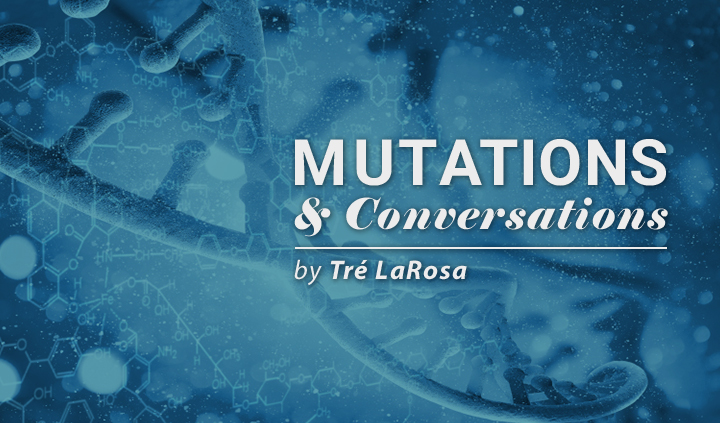Is There an Upper Limit to the Improvements That CFTR Modulators Can Provide?

The cystic fibrosis community has access to three cystic fibrosis transmembrane conductance regulator (CFTR) modulators right now: Kalydeco (ivacaftor), Orkambi (lumacaftor/ivacaftor), and Symdeko (tezacaftor/ivacaftor).
These CFTR modulators are each approved for specific mutations and age groups. If you’ve been following the progress in this area, you’ll be aware that Kalydeco showed remarkable improvement in the standard measurements for modulator efficacy. Participants in clinical trials showed a significant decline in their sweat chloride and improvement in their lung function. They also reported increases in quality of life scores.
A few years later, after the results of Orkambi’s early studies were released, many in the community were disheartened. Orkambi — a double combo therapy consisting of Kalydeco’s compound and another intending to target more difficult-to-fix mutations — did not seem to show nearly as much improvement in the lives of trial participants. And it also had legitimate safety concerns. According to an article published in The New England Journal of Medicine, “the rate of discontinuation due to an adverse event was 4.2% among patients who received lumacaftor–ivacaftor versus 1.6% among those who received placebo.”
Then came Symdeko. Also a double combo using Kalydeco’s potentiator, the results for Symdeko were about equal to Orkambi, but with a better safety profile.
Interested in Cystic Fibrosis research? Sign up for our forums and join the conversation!
Although I responded positively to Orkambi and I’m thankful for it keeping me stable for the last four years, I’ll admit that I was disheartened by the collective results of both Orkambi and Symdeko. After I had seen the robust response patients had from Kalydeco, I started to worry that different classes of mutation may have an upper limit to CFTR fixation.
Then came the results of the newest treatment: Elexacaftor (VX-445) is the third compound in Vertex’s new triple-combo therapy. This therapy consists of the two compounds that constitute Symdeko (scientifically labeled VX-661, a corrector, and VX-770, a potentiator) and elexacaftor.
The results from two clinical trials of the triple-combo regimen were similar to those of the Kalydeco studies. In both trials, patients showed “statistically significant improvements in all key secondary endpoints,” including improved lung function and reduced sweat chloride with a safety profile comparable to that of Symdeko.
These impressive results give me a reason to be ecstatic. The hope is to get the triple-combo therapy to 90 percent of CF patients. But in science, as in medicine, we have to be forward-thinking. We have to predict problems before they rear their heads. So, this begs the following questions: Is there an upper limit to how much modulators can “fix” the genetic cause of CF? And if so, what is that upper limit?
As scientifically groundbreaking as modulators are, they are still not a cure. They are not technically genetic therapy. The simplest explanation is that they are “chaperone” molecules that help the broken protein function somewhat better, rather than fix the mutation so that it functions as a healthy protein.
It’s hard to prognosticate about how much “better” modulators can continue to get. It’s possible to secondarily and tertiarily deduce CFTR function and improvement. Model systems gauge CFTR function by improved electrical conductance and by observing patient-derived cells absorbing more water. We can assume CFTR is improved by looking at the primary and secondary endpoints of studies: increased lung function, decreased sweat chloride, and exacerbation rate.
But until we have a method of determining exactly how improved CFTR function is with models that observe the protein in its fixed conformation with the assistance of modulators, we won’t know whether modulators can or can’t continue to improve. With these improved models, we can better understand the mechanism of action behind modulators and be able to develop better ones.
However, I predict that some modulators may never work that well for some patients. Many factors — how their body metabolizes the medication, whether or not they have other genes that affect their CFTR, and even just luck — are involved, which means this will always be a tricky beast.
In the community, we should be cautiously hopeful about existing modulators. We still need to work to create therapies that are accessible to every single person with CF, complicated mutation, or not. I’m not sure that modulators are the answer, but they’re a good first step. Fingers crossed for gene therapy.
Follow along with my other writings on my humbly named site, www.trelarosa.com.
***
Note: Cystic Fibrosis News Today is strictly a news and information website about the disease. It does not provide medical advice, diagnosis, or treatment. This content is not intended to be a substitute for professional medical advice, diagnosis, or treatment. Always seek the advice of your physician or other qualified health provider with any questions you may have regarding a medical condition. Never disregard professional medical advice or delay in seeking it because of something you have read on this website. The opinions expressed in this column are not those of Cystic Fibrosis News Today, or its parent company, Bionews Services, and are intended to spark discussion about issues pertaining to cystic fibrosis.








Leave a comment
Fill in the required fields to post. Your email address will not be published.